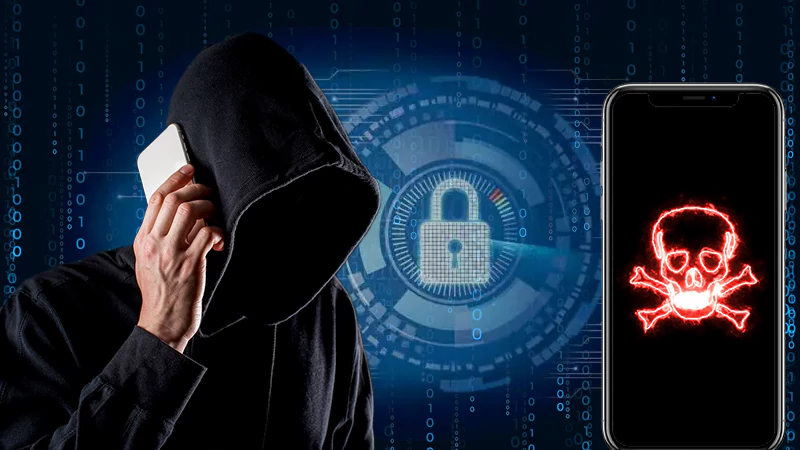Organizations all over the world had to operate remotely to sustain operations. Many companies took advantage of Spectrum promotions to provide their employees with internet connections and laptops to continue working from home. But this new normal brought with it a new wave of security threats. It made organizations realize there are lots of cybersecurity gaps within their organizational infrastructure that need to be filled.
Cyberattacks are hitting organizations of all sizes at an “alarming” rate. Phishing, malware, ransomware, and other incursion attempts are on the rise. 20 percent of businesses have reported security breaches that resulted in financial losses. Let me ask you, what have you done to boost the security of your business operations?
Also Read: What Does Basic Cable Service and Internet Include Spectrum
Don’t wait to be hit by a cyberattack to wake up. Take concrete steps now to avoid regrets later. Help has arrived. Here are some steps you can take to close the cybersecurity gaps:
1: Start with a Risk Assessment
Step one is to find the vulnerabilities within your protection fabric, which is best done by calling an outside expert to conduct a risk assessment. It can also be done by an internal officer, if available.
The goal is to perform a health security check covering hardware, software, network connections, data storage and classification, user authentication system, and other things. Any vulnerabilities found through this study will help you determine the next steps to be taken for improving the security.
2: Tighten the Security
Most businesses have an open floor plan. There are no doors or security checks to stop them from accomplishing what they need. With such an open network, any opponent can gain access to a user’s machine and conduct fraudulent activity.
If this sounds familiar, you must take an action immediately. Switching to a “segmented” network will tighten the security by creating numerous sub-networks. Routers, firewalls, permissions, and other security features will frustrate the hacker and so reduce the danger of disclosure. Your company’s sensitive information will remain protected.
You can also utilize the quite popular security tool VPN (Virtual Private Network). NordVPN is one of the best VPNs on the market today. Read this whole NordVPN review from experts to find out what makes it so popular.
3: Upgrade All Your Passwords
Passwords are the weakest link in the security chain. Before and after the pandemic, the rise of cloud services lowered their value by removing the security of a corporate network in terms of user authentication. Password-based identity management technologies might make it difficult for remote workers to access company apps, depending on the device and how it’s built.
To amplify the security, apart from upgrading passwords, add multifactor authentication. It can toughen up your security since the user’s identity has to be verified. MFA includes fingerprint scanning, security token, PIN, and some others.
4: Provide Training and Education to Your Employees
Adhering to security best practices can be difficult for employees even in the best of circumstances, but working remotely increases the possibility of them letting their guard down. Users are more likely to click on a spearfishing email when they are distracted by running, supporting children with e-learning, or managing other family responsibilities at home. They may also be unaware of the importance of password hardening on their home networks or the dangers of using their personal computers for work-related activities and vice versa.
Security awareness programs, such as sending periodic emails to warn workers about various phishing strategies, could be a crucial defense line against bad actors targeting remote employees.
5. Be Prepared
If the COVID pandemic has taught us anything, it is that catastrophe can strike at any time and from the most unexpected places. This is true for both cyberattacks and public health crises. It implies that IT teams should be prepared to handle and resolve cybersecurity events from any source.
Preparation for various scenarios might assist in reducing downtime and damage when and if cybercriminals strike. These “tabletop exercises” entail assembling key personnel to discuss policies, responsibilities, and other crisis response issues.
Apart from that make sure the crisis management strategy is up to date as well. Who will alert the authorities and regulators? Do you want to talk to the press? Are you ready to start the remediation process? This is just as important as putting in the technology to keep the data safe when it comes to risk management. So, it’s best to have an action plan for addressing these things alongside having a response plan.
Conclusion
The good news is security is an agenda that is being discussed at most executive meetings and it’s getting this attention because of the growing online threats caused by the pandemic.
In the midst of the coronavirus’s second 4th wave, businesses should be proactive in addressing risks, planning measures to prevent successful cyberattacks rather than reacting when they happen. Although prevention measures are crucial, cyber-attack detection, response, and recovery skills are also required. This is something organizations still have to work on to ensure better security practices are in place.
















